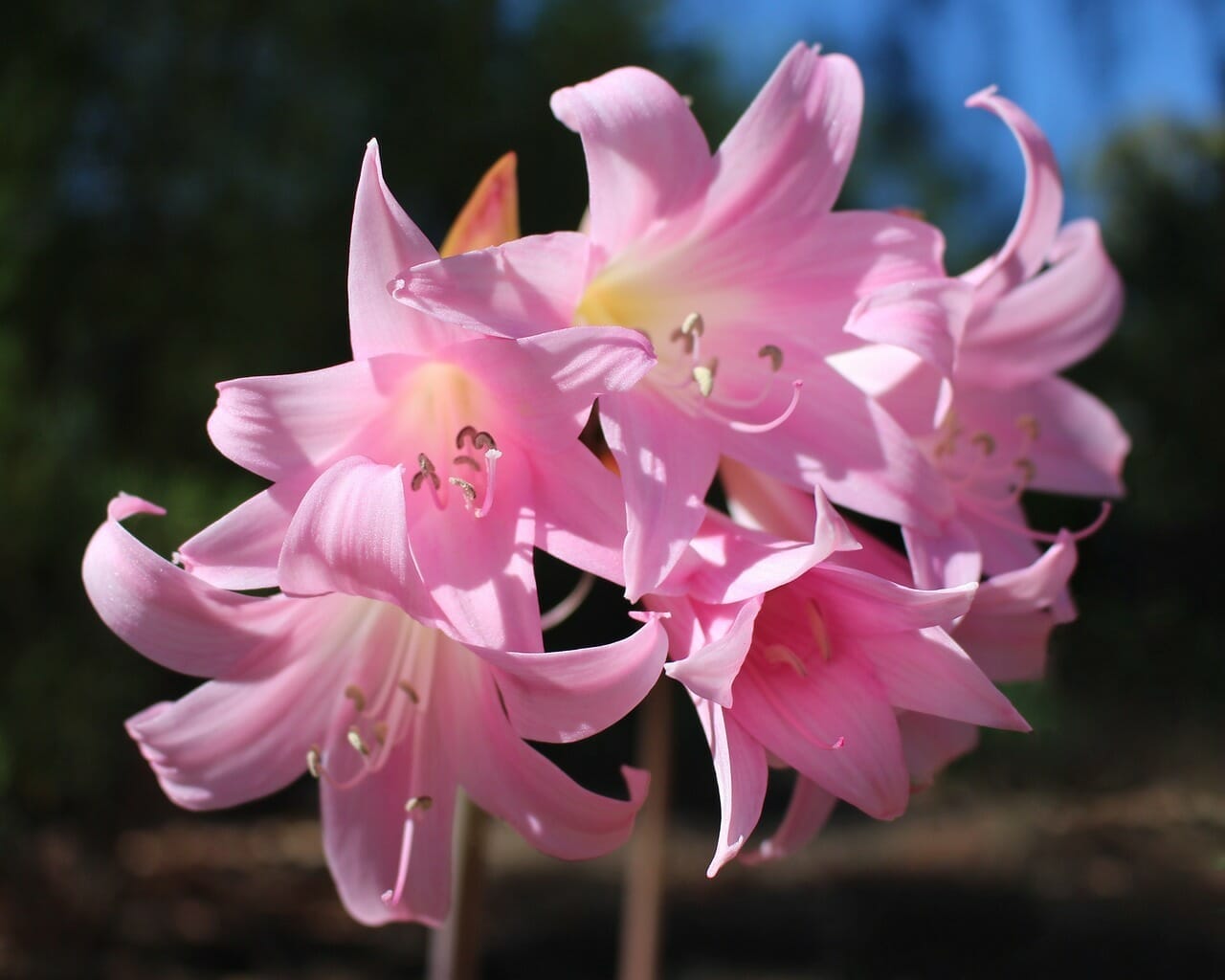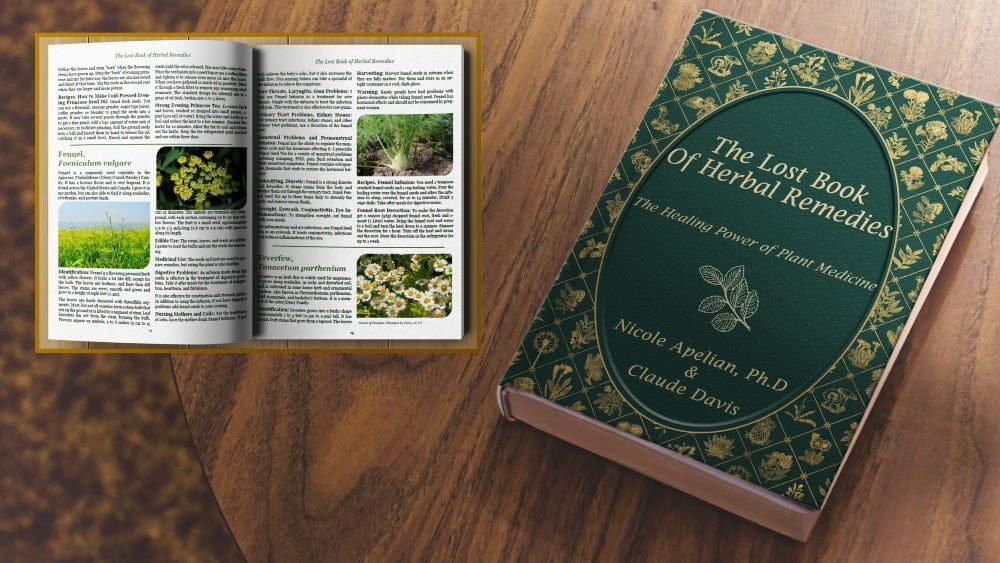Ever stumbled upon a flower that’s as mysterious as its name? The types of naked ladies flowers can be a real puzzle. 🌺
You spot them in gardens, but identifying them? That’s a challenge. They’re beautiful, but oh-so-confusing. 😕
We get it. You want to know more, but where to start? It’s like trying to find the perfect recipe without knowing the ingredients.
Frustrating, right?
Fear not, friend! We’ve got the answers. Explore the 6 unique types of naked ladies flowers with us.🌼
Understanding Naked Ladies Flowers
Definition and Origin
Naked Ladies Flowers, known scientifically as Amaryllis belladonna, are a captivating sight in gardens, especially during the waning days of summer.
Native to the western part of the Cape of South Africa, these tall, pink, fragrant lilies have a way of popping up in the most unexpected places, like road cuts and abandoned lots, briefly transforming otherwise neglected areas into charming landscapes. 🌸
Connection to Amaryllis Family
Part of the Amaryllis family, the Naked Lady grows to about 2 feet tall, with clusters of pink flowers.
It’s a bulbous perennial that can live up to 75 years with little care, and it’s known for its drought tolerance.
The emergence of flowers before leaves, known as hysteranthy, is an adaptation to drought and unpredictable rains. 🌷
Interesting Facts
- Seasonal Growth: In winter and spring, the plant produces long, strappy leaves that die back by summer. During summer, the bloom stalk emerges without any leaves, hence the “naked” part of the name.
- Propagation Techniques: The best time to divide the bulbs is during its summer dormancy after blooming. Disturbed plants may take several years to bloom again, but they should eventually flourish if planted in a sunny, well-drained location.
- Historical Spread: Introduced to Britain from Portugal in the early 1700s, it became abundant in Italy and northern Europe by the 1800s. Thomas Jefferson even received a shipment of bulbs from South Africa in 1812!
- Wildfire Blooming: Like some chaparral plants, the Naked Lady blooms after wildfire, perhaps because the fire removes plants that shade its leaves.
- Underwater Survival: The plant’s success is due to its tolerance to various growing conditions, including being drought tolerant and not requiring summer water.
Types of Naked Ladies Flowers
There are 6 types of naked ladies flowers:
- Jersey Lily
- Surprise Lily
- Red Spider Lily
- Easter Lily
- March Lily
- Amaryllis Paradisicola
Jersey Lily: A Blossom of Elegance
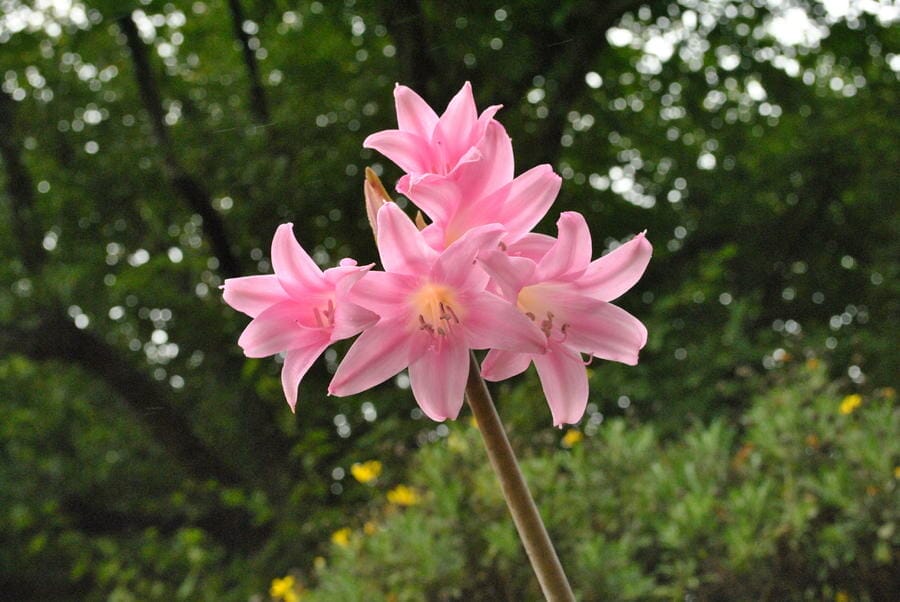
Jersey Lily, also known as Amaryllis belladonna, belladonna-lily, naked-lady-lily, or March lily, is a captivating flower native to Cape Province in South Africa.
🌺 But it’s not just confined to its homeland; it’s naturalized in various places like Corsica, Portugal, the Azores, Madeira, California, Texas, and even the Juan Fernández Islands.
Description and Appearance
This perennial bulbous geophyte is known for its one to two erect solid stems that appear in late summer.
The inflorescence bears 2–12 showy fragrant funnel-shaped flowers on a ‘naked’ (leafless) stem, giving it the playful name of naked-lady-lily.
The pink flowers, up to 10cm in length, appear in autumn before the leaves, known as hysteranthy. 🌸
Habitat and Ecology
Amaryllis belladonna is found growing among rocks in South Africa. Its leaves begin growing in early spring or late autumn, lasting for a few weeks to a few months.
When found in the wild, it’s pollinated by hawk moths and carpenter bees, releasing a sweet fragrance at night. The seeds are soft, fleshy, and dispersed through wind during winter, germinating in as early as two weeks.
But patience is key; it takes three to six years for a fully flowering plant to develop. 🌱
Toxicity and Cultivation
Beware, garden enthusiasts! All parts of the A. belladonna plant are toxic, containing alkaloids like lycorine, pancracine, and amaryllidine.
It can cause vomiting and diarrhea in humans, and even heart or renal failure in wildlife. But don’t let that deter you; it’s still a prized garden addition.
The bulbs are best planted just below the soil’s surface, requiring little watering and being drought tolerant. It’s even earned the Royal Horticultural Society’s Award of Garden Merit. 🏆
Medicinal Properties
Interestingly, Amaryllis belladonna bulbs contain compounds like 1,4-dihydroxy-3-methoxy powellan, an alkaloid that has properties to fight against malaria caused by P. falciparum.
A beautiful flower with a purpose! 🌼
Stay tuned for the next section where we’ll uncover the secrets of the Surprise Lily, another exotic member of the naked ladies flowers family. You won’t want to miss it! 🌷
Surprise Lily: An Exotic Enigma 🌺
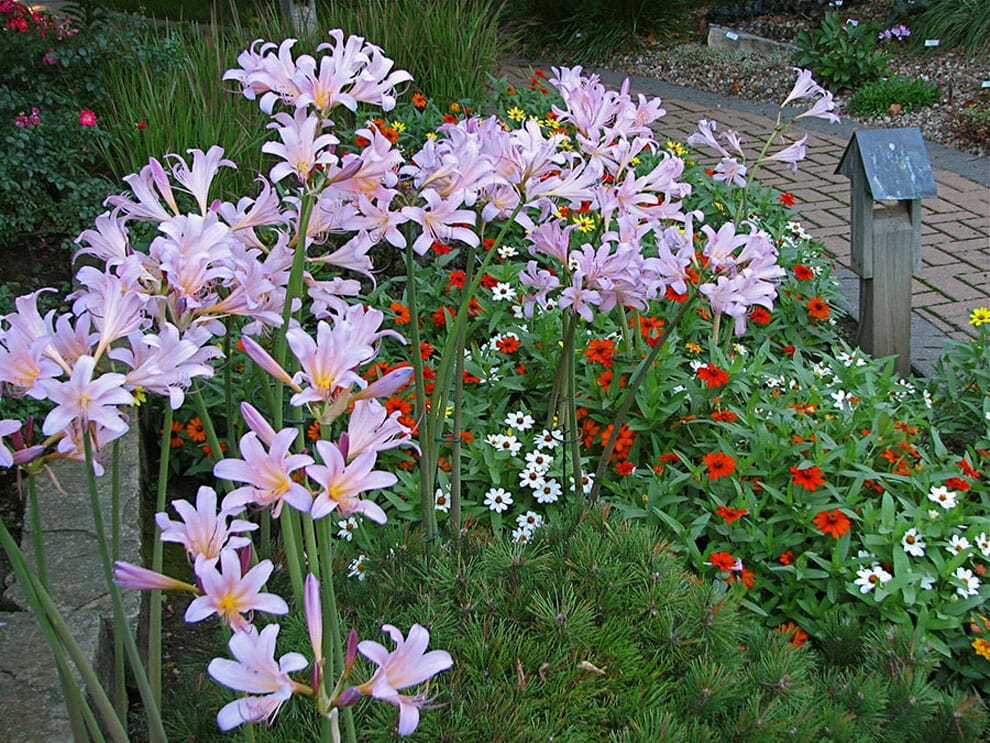
Surprise Lily, also known as Lycoris squamigera, is a fascinating member of the naked ladies flowers family.
Its name alone sparks curiosity, and its growth pattern is just as intriguing. But what makes this lily so surprising? Let’s unravel the secrets! 🌷
Growth and Appearance
The Surprise Lily is a bulbous perennial that’s known for its sudden appearance.
One day, your garden is as usual, and the next, these beautiful trumpet-shaped flowers have sprung up, almost magically! 🎺
The flowers are fragrant, with a soft pink hue, and they grow on tall, slender stems.
What’s more, they bloom without any leaves, adding to their mysterious allure. 🌸
Habitat and Adaptations
Native to China, Japan, and Korea, the Surprise Lily has found its way into gardens across the globe.
It’s a hardy plant, thriving in various climates and soil types. Its ability to grow in unexpected places, like road cuts and abandoned lots, makes it a captivating sight for garden enthusiasts and passersby alike. 🌍
Cultivation and Care
Growing Surprise Lily is a breeze! Plant the bulbs just below the soil’s surface, and they’ll do the rest.
They’re drought tolerant and require little care, making them a favorite among gardeners. And guess what? They can live up to 75 years! Talk about a long-lasting surprise! 🌱
Symbolism and Uses
In some cultures, the Surprise Lily symbolizes resurrection and renewal. Its sudden appearance is seen as a symbol of hope and new beginnings.
Whether you’re looking to add a touch of exotic elegance to your garden or seeking a flower with a deeper meaning, the Surprise Lily is sure to enchant. 🌼
Ready to discover more about the Red Spider Lily, another exotic member of the naked ladies flowers family?
Red Spider Lily: A Fiery Beauty 🌺
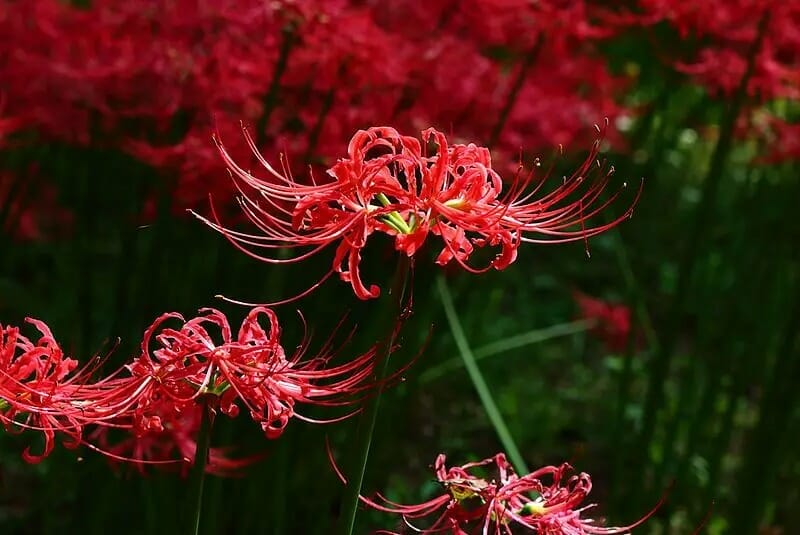
The Red Spider Lily, scientifically known as Lycoris radiata, is a captivating member of the naked ladies flowers family.
With its brilliant coral-red flowers adorned with elegantly curled petals and exceptionally long stamens, it’s a sight to behold in any garden. 🌸
Growth and Bloom
This bulbous perennial blooms in late summer to early fall, adding vibrancy to the waning landscape.
The flowers appear on naked stems, giving it a unique and exotic appearance.
But that’s not all; the foliage of strap-shaped, dark green leaves with a hint of blue emerges after flowering and persists all winter long, fading in late spring. 🌱
Habitat and Adaptations
Native to East Asia, the Red Spider Lily has found its way into gardens across the globe. It’s a hardy plant, thriving in various climates and soil types.
Its ability to grow in unexpected places, like road cuts and abandoned lots, makes it a captivating sight for garden enthusiasts and passersby alike. 🌍
Symbolism and Cultural Significance
In some cultures, the Red Spider Lily symbolizes memories of lost loved ones and is often planted in graveyards. Its sudden appearance is seen as a symbol of transition and new beginnings.
Whether you’re looking to add a touch of fiery elegance to your garden or seeking a flower with a deeper meaning, the Red Spider Lily is sure to enchant. 🌼
Easter Lily: A Symbol of Spring’s Resurgence 🌼

Easter Lily, scientifically known as Lilium longiflorum, is a perennial bulb that’s long been a symbol of spring’s resurgence.
Thriving in gardening zones 4 through 8, this beautiful flower is recognized by its white trumpet-shaped blooms and sweet fragrance.
Though native to Japan’s southern islands, it’s now grown on farms in the United States, making a lovely addition to homes during spring. 🌸
Choosing the Right Lily
When selecting an Easter Lily, it’s wise to choose one that’s not fully in bloom.
Look for a variety of buds and blooms to keep a succession of pretty flowers coming.
Healthy green foliage, a straight stem, and well-formed buds that are symmetrically arranged are key indicators of a good pick. And don’t forget to check for bugs or signs of distress! 🌷
Care and Maintenance
Easter Lily care is relatively low maintenance, but it does require some attention:
- Soil: Prefers well-draining soil that’s slightly acidic to neutral and rich in organic matter.
- Sunlight: Needs bright, indirect light. When outdoors, it thrives in a sunny spot with some protection from the hot afternoon sun.
- Water: Likes consistently moist but not waterlogged soil. Water when the top inch of soil is dry to the touch.
- Temperature: Thrives in mild temperatures around 65 to 75 degrees during the day and 55 to 65 degrees at night.
- Fertilizer: Timing is crucial. Fertilize in the spring when new growth begins, using a balanced, slow-release fertilizer.
Propagation and Re-Blooming
After blooming, you can propagate Easter Lily by planting small bulbils from the base of the main bulb.
If you want to encourage re-blooming, start with a healthy bulb, plant it in well-draining soil, and place it in a sunny location with filtered sunlight.
Regular watering and fertilization every two to four weeks will support growth. 🌱
Common Problems
Yellowing leaves may indicate under-watering, while stunted growth could stem from poor soil quality, insufficient light, or disease.
Regular care and attention to these signs can help you prevent and treat these issues, ensuring a healthy and vibrant Easter Lily. 🌼
Next up, we’ll dive into the world of the March Lily, another fascinating member of the naked ladies flowers family. Stay tuned! 🌷
March Lily: A Garden’s Delight 🌺
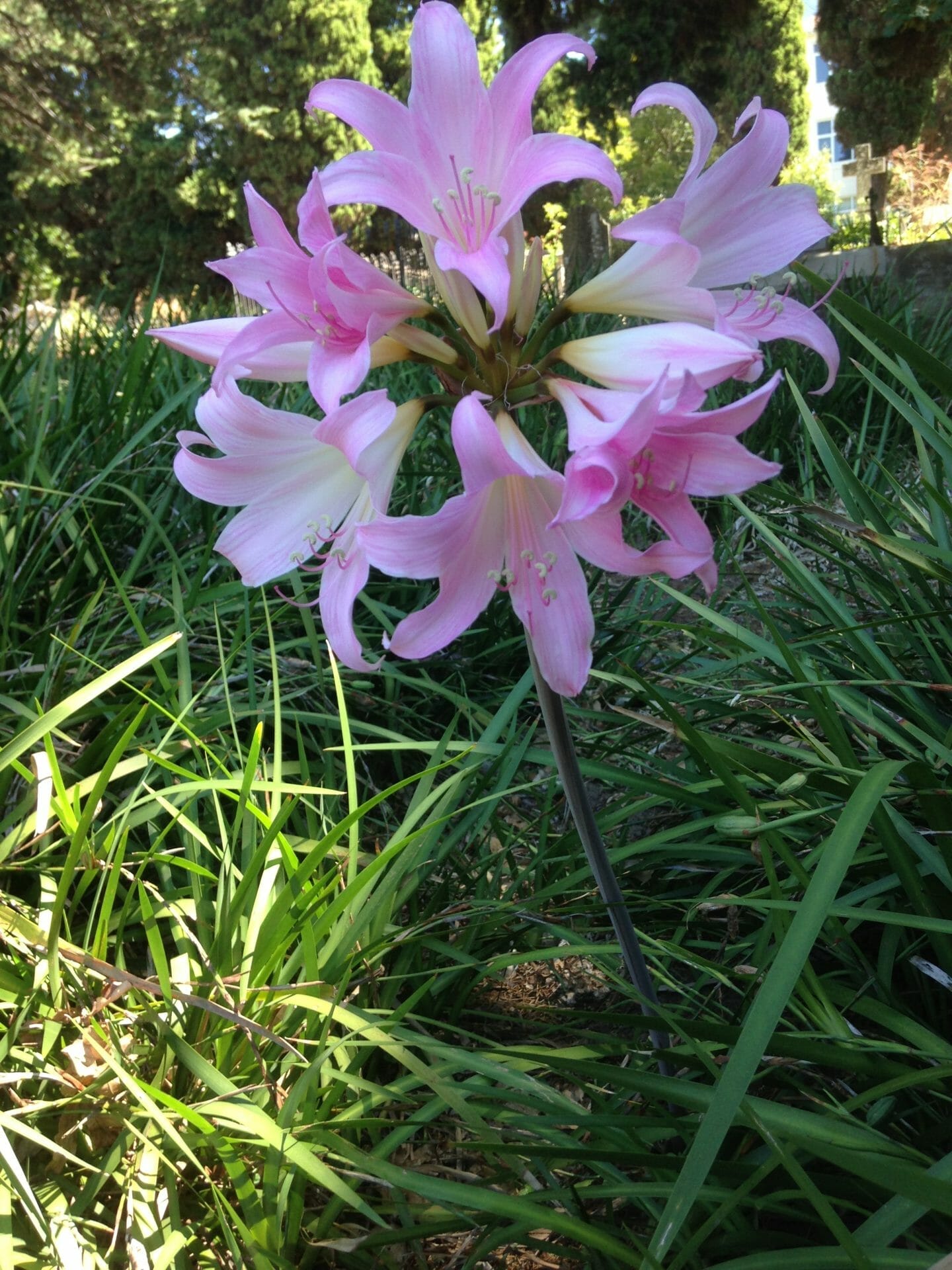
March Lily, also known as Amaryllis belladonna, is a captivating member of the naked ladies flowers family.
Native to the Cape of South Africa, it’s a bulbous perennial that has found its way into gardens across the globe. 🌍
Growth and Appearance
The March Lily is known for its tall, slender stems that bear clusters of fragrant, trumpet-shaped flowers.
These pink blooms appear in late summer, adding a touch of elegance to any garden.
What’s more, they bloom without any leaves, giving them a unique and exotic appearance. 🌸
Habitat and Adaptations
Thriving in various climates and soil types, the March Lily is a hardy plant.
Its ability to grow in unexpected places, like road cuts and abandoned lots, makes it a captivating sight for garden enthusiasts and passersby alike. 🌱
Symbolism and Cultural Significance
In some cultures, the March Lily symbolizes memories of lost loved ones and is often planted in graveyards.
Its sudden appearance is seen as a symbol of transition and new beginnings.
Whether you’re looking to add a touch of elegance to your garden or seeking a flower with a deeper meaning, the March Lily is sure to enchant. 🌼
Toxicity and Medicinal Properties
Beware, garden enthusiasts! All parts of the A. belladonna plant are toxic, containing alkaloids like lycorine, pancracine, and amaryllidine.
It can cause vomiting and diarrhea in humans, and even heart or renal failure in wildlife. But don’t let that deter you; it’s still a prized garden addition. 🏆
Interestingly, Amaryllis belladonna bulbs contain compounds that have properties to fight against malaria caused by P. falciparum. A beautiful flower with a purpose! 🌼
Next up, we’ll explore the world of Amaryllis Paradisicola, another fascinating member of the naked ladies flowers family. Stay tuned! 🌷
Amaryllis Paradisicola: A Hidden Gem in the Garden 🌺
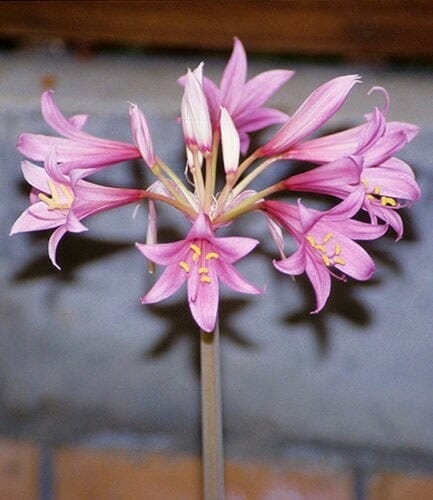
Amaryllis Paradisicola, a lesser-known species within the Amaryllis family, is a fascinating addition to the world of naked ladies flowers.
While information about this particular species is scarce, its unique characteristics make it a subject of intrigue for garden enthusiasts and botanists alike. 🌷
Appearance and Characteristics
Known for its captivating pink blooms, Amaryllis Paradisicola shares some common traits with other members of the Amaryllis family.
However, specific details about its foliage, height, spacing, and hardiness remain largely unknown. This adds to its mystique, making it a flower that’s as enigmatic as it is beautiful. 🌸
Regional Growth
Though detailed information about its growth requirements is limited, Amaryllis Paradisicola has been spotted growing outdoors in regions like Orlando, Florida.
Its adaptability to different environments and potential for propagation methods are areas that warrant further exploration. 🌱
Conservation Status
Interestingly, Amaryllis Paradisicola is classified as Least Concern (LC) in conservation terms. This suggests that, despite its obscurity, the plant is not currently at risk of extinction.
It’s a reassuring note for those interested in preserving the diversity and richness of exotic plants in our gardens and local ecosystems. 🌼
Next up, we’ll delve into the world of growing conditions and care for naked ladies flowers. From soil requirements to sunlight, watering, and fertilization, we’ll uncover the secrets to nurturing these enchanting blooms. Stay tuned! 🌷
Growing Conditions and Care For Naked Lady Flowers 🌺
Growing Naked Lady Flowers, or Amaryllis belladonna, can be a delightful experience for garden enthusiasts.
These enchanting blooms not only add a touch of elegance to your garden but also thrive with minimal care. Let’s uncover the secrets to nurturing these captivating flowers! 🌷
Soil Requirements
Naked Lady Flowers prefer well-draining soil that’s rich in organic matter.
A mixture of sandy loam with a touch of compost can create the perfect environment for these bulbous perennials.
Avoid heavy clay soils, as they may hinder the growth of the bulbs. 🌱
Watering and Fertilization
These exotic plants are known for their drought tolerance, making them a low-maintenance choice for busy gardeners.
Watering should be moderate during the growing season, and less frequent during dormancy.
Fertilization isn’t a must, but a balanced, slow-release fertilizer can boost growth if applied in early spring. 💧
Temperature and Sunlight
Naked Lady Flowers thrive in mild temperatures, enjoying the warmth of the sun.
Plant them in a sunny spot, but be mindful of the hot afternoon sun, which might scorch the blooms.
They can adapt to various climates, making them a versatile choice for different regions. ☀️
Propagation Techniques
Propagation is usually done through bulb division. The best time to divide the bulbs is during summer dormancy after blooming.
Plant the bulbs just below the soil’s surface, and they’ll do the rest.
Patience is key; it might take a few years for the new plants to bloom, but the wait is worth it! 🌼
Final Say So!
🌺 Embrace the Enigma of Naked Ladies Flowers! 🌺
From the captivating charm of the Jersey Lily to the mysterious allure of Amaryllis Paradisicola, the world of Naked Ladies Flowers is a garden of wonders waiting to be explored.
Whether you’re a seasoned gardener or a curious nature lover, these exotic blooms offer a delightful dance of color, fragrance, and intrigue.
Drought-tolerant, low-maintenance, and brimming with symbolism, each member of this floral family tells a unique story.
Plant them in your garden, and let their elegance unfold. Dive into their history, and unearth tales of cultural significance.
Experiment with their care, and watch them flourish in unexpected places.
So why remain puzzled? Embrace the enigma.
Let the Naked Ladies Flowers surprise you, inspire you, and add a touch of the exotic to your everyday life.
Your garden is calling, and these enchanting ladies are ready to answer. 🌼🌸
Happy Gardening! 🌿

